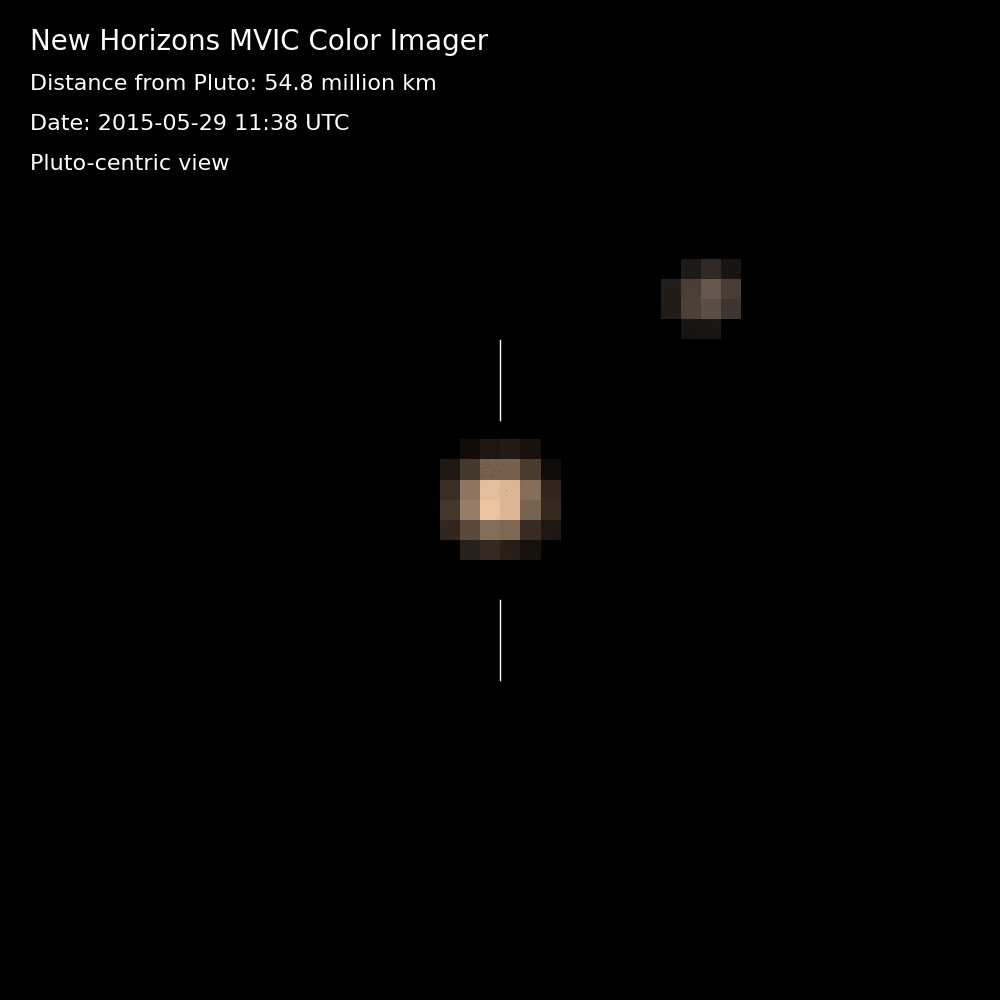
The first color movies from NASA’s New Horizons mission show Pluto and its largest moon, Charon, and the complex orbital dance of the two bodies, known as a double planet. “It’s exciting to see Pluto and Charon in motion and in color,” says New Horizons Principal Investigator Alan Stern of the Southwest Research Institute (SwRI), Boulder, Colorado. “Even at this low resolution, we can see that Pluto and Charon have different colors—Pluto is beige-orange, while Charon is grey. Exactly why they are so different is the subject of debate.” New Horizons will make its closest approach to Pluto on July 14, zipping by about 7,800 miles (12,500 kilometers) above the surface. It’s the first mission to Pluto and the Kuiper Belt, a relic of solar system formation beyond Neptune. Sending a spacecraft on this almost 3-billion mile journey will help us answer basic questions about the surface properties, atmospheres and moons of the Pluto system. These near-true color movies were assembled from images made in three colors – blue, red and near-infrared – by the Multicolor Visible Imaging Camera on the instrument known as Ralph, a “Honeymooners” reference that classic TV fans can appreciate. The images were taken on nine different occasions from May 29-June 3. Although the two movies were prepared from the same images, they display the Pluto-Charon pair from different perspectives. One movie is “Pluto-centric,” meaning that Charon is shown as it moves in relation to Pluto, which is digitally centered in the movie. (The North Pole of Pluto is at the top.) Pluto makes one turn around its axis every 6 days, 9 hours and 17.6 minutes—the same amount of time that Charon rotates in its orbit. Looking closely at the images in this movie, one can detect a regular shift in Pluto’s brightness—due to the brighter and darker terrains on its differing faces. The second movie is barycentric, meaning that both Pluto and Charon are shown in motion around the binary’s barycenter – the shared center of gravity between the two bodies as they do a planetary jig. Because Pluto is much more massive than Charon, the barycenter (marked by a small “x” in the movie) is much closer to Pluto than to Charon.
Jun 22

